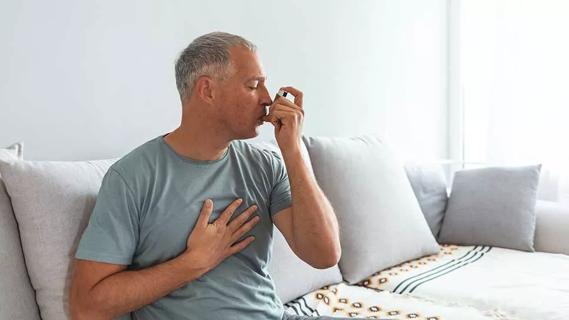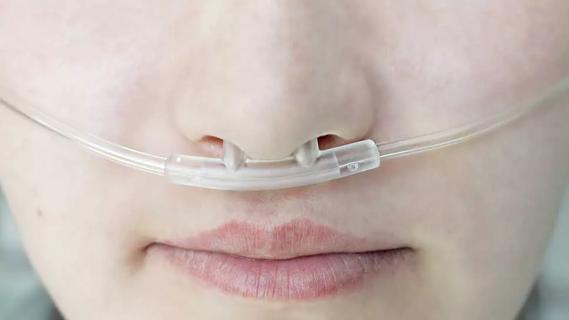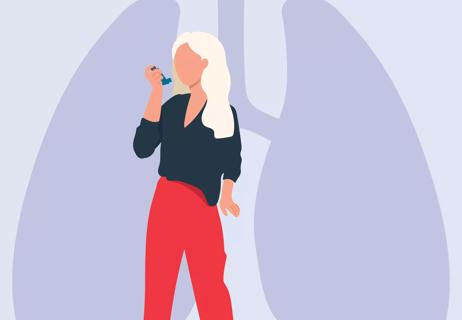You can reduce your chances of a flare-up by quitting smoking, avoiding respiratory infections and following your doctor’s orders

Breathe in. Breathe out. Most people don’t give it a second thought. But if you have chronic obstructive pulmonary disease (COPD), breathing difficulties are a part of life. And a flare-up of symptoms (known as exacerbation) might send you to the hospital.
Advertisement
Cleveland Clinic is a non-profit academic medical center. Advertising on our site helps support our mission. We do not endorse non-Cleveland Clinic products or services. Policy
“Preventing exacerbations is an essential part of treatment,” says pulmonologist Uddalak Majumdar, MD. “Every person with COPD should know the warning signs. Acting quickly can help limit the severity of an exacerbation and prevent further lung damage.”
Dr. Majumdar explains what you need to know about COPD exacerbations, including how to treat and prevent them.
COPD is a chronic lung disease that affects airflow in your lungs, making it hard to breathe. It’s a spectrum of disease that includes two common conditions — chronic bronchitis and emphysema. Symptoms of COPD include shortness of breath, wheezing and a long-standing cough, as well as less well-known signs like fatigue.
A COPD exacerbation is when symptoms worsen rapidly. A severe COPD exacerbation may require emergency medical care and can be life-threatening. Some people with COPD end up in the hospital several times a year due to exacerbations.
People with COPD have good days and bad days. But an exacerbation is more than a bad day, clarifies Dr. Majumdar. COPD exacerbation symptoms can vary. You may experience:
Advertisement
A severe COPD exacerbation can cause oxygen levels to drop — a life-threatening situation. Severe symptoms include:
COPD exacerbations occur when something triggers inflammation in narrowed airways. The most common causes of COPD exacerbations are respiratory infections, like a cold, flu or pneumonia.
A COVID-19 infection can also cause a COPD exacerbation. But studies of patient outcomes during the pandemic found this effect was less than expected.
“The inhaled medications we use to treat COPD seem to protect against COVID-19 and limit its severity, though we’re still learning about this fascinating aspect,” notes Dr. Majumdar.
Other triggers of COPD exacerbations include:
Recognizing a COPD exacerbation and getting treatment early may help you manage a flare-up and avoid the emergency room. If you’re living with COPD, take note of how you feel on a good day, so you can tell when your symptoms are getting worse.
COPD care includes developing a plan for what to do when symptoms flare. Dr. Majumdar uses the action and management plan from the American Lung Association. This document outlines self-management steps for color-coded zones based on how you feel:
Proactive treatment to manage a COPD exacerbation targets the yellow zone. Your healthcare provider may give you corticosteroid or antibiotic medications to have on hand. You start taking them when symptoms flare. Other yellow zone actions may include:
If your symptoms don’t go away within a day or two or get worse, call your healthcare provider.
A common myth about COPD is that it’s not treatable. With proper treatment, based on evidence and research, you can manage your symptoms and prevent exacerbations. Dr. Majumdar recommends these six steps:
Smoking is the main cause of COPD. Continuing to smoke can make COPD worse and lead to exacerbations. If you’re ready to quit smoking, your healthcare provider can help.
Advertisement
Respiratory infections are the top trigger for COPD exacerbations. Vaccines can protect you from certain respiratory infections, including the flu, pneumonia and COVID-19. Other infection prevention tips include:
Medications and inhalers are a core part of COPD treatment. Your healthcare provider will choose your medications based on your COPD stage, symptoms and previous exacerbations.
Using your inhalers as directed reduces your risk of COPD flare-ups. Inhalers can have issues when it comes to difficulty of use and costs. You can work with your provider and pharmacist to choose the appropriate inhaler. And your healthcare provider, respiratory therapists and/or pharmacists can help design a personalized medication plan for those with severe COPD.
Exercise can improve your strength and energy and ease COPD symptoms. Examples include stretching, aerobic exercise and resistance training. Before beginning a workout routine, talk to your doctor about what activities are right for you and how to get started.
Your provider may also recommend pulmonary rehabilitation to help get you moving. This program combines education and supervised exercise. Pulmonary rehabilitation staff provide a personalized plan and support to help you stick with it.
Advertisement
Sleep apnea, heart disease, acid reflux and mental health disorders are all linked to COPD exacerbations. Talk to your healthcare provider about steps you can take to manage these related health conditions.
The food you eat fuels all your activities, including breathing. Eating a balanced diet can give you the energy and nutrients you need to be as healthy as possible.
You can recover from a COPD exacerbation, but with frequent exacerbations, your lung function may decrease with time.
“Each flare-up can cause small but permanent lung damage,” explains Dr. Majumdar. “People who have frequent COPD flares often have poorer quality of life and health outcomes.”
Living with COPD can be a challenge. Your life may change, but it can still be full and active. Turn to your healthcare team for the information and tools you need to control the condition and prevent exacerbations.
Advertisement
Learn more about our editorial process.
Advertisement

Both conditions have similar symptoms, but different causes and treatments

Get improved quality of life and breathe better

Quitting smoking helps immediately, but this disease doesn’t only affect people who smoke

People with certain pre-existing medical conditions have increased risk factors

Some tips to make your next fire safer

Dry or wet, acute or chronic — it may point to a cause

Most recommended precautions center around minimizing bruising or swelling

Type 2 diabetes isn’t inevitable with these dietary changes

Applying a hot or cold compress can help with pain